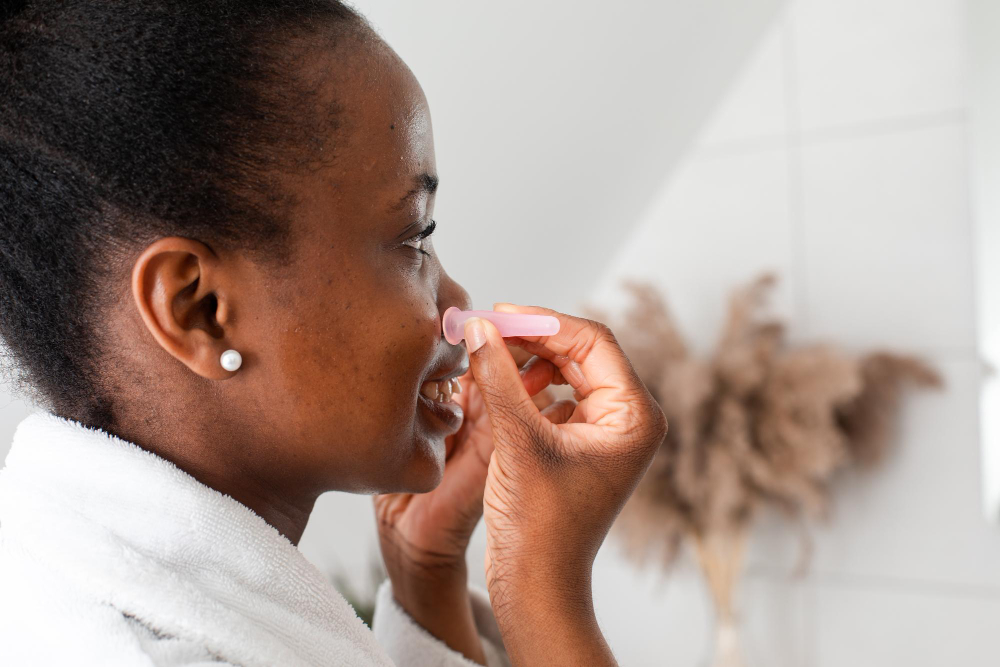CONTENTS

Nose Piercing 101: Everything You Need to Know
Nose piercing, or nostril piercing, has been a special form of body art for centuries.
It’s a cool and stylish way to show off your individuality, and it’s gained popularity worldwide. However, before taking the leap and getting your nose pierced, it’s crucial to know the ins and outs of the process, aftercare, and potential risks involved.
In this article, we’ve got you covered with everything you need to know about nose piercing. From the different types of this piercings to the healing process and how to care for your new piercing, we’ll give you the lowdown on all the essential details.
Whether you’re a first-timer or an experienced body piercing enthusiast, we will provide valuable insights to make your nose piercing experience successful and enjoyable.
Types of Nose Piercings

Nose piercing is a popular form of body modification, and there are several types of nose piercings to choose from.
One of the most common types is the nose ring, a circular piece of jewellery inserted through the nostril. Another popular type is the nostril screw, which has a curved shape and is inserted through the nostril and twisted to secure it in place.
Septum piercing is also another popular type of nose piercing, which involves piercing the tissue between the nostrils. This type of piercing can be done with various jewellery, including rings and horseshoe-shaped barbells.
Meanwhile, bridge piercing is a unique type of nose piercing that involves piercing the bridge of the nose between the eyes. This type of piercing can be done with a straight barbell or a curved barbell, depending on personal preference.
To sum up, this piercing offers a variety of options to choose from, each with its own distinctive style and flair.
Whether you opt for a classic nose ring or a statement septum piercing, choosing a reliable piercer and making a thoughtful decision to ensure a safe and successful piercing journey is essential.
What Type of Jewellery is Used for Nose Piercing?

When it comes to nostril piercing, choosing the right type of jewellery is just as important as selecting a professional piercer.
Using the wrong type of jewellery can lead to irritation, infection, and even rejection of the piercing. Therefore, it’s important to know what type of jewellery is suitable for nose piercing.
Professional piercers typically use body jewellery that is made from high-quality materials and designed specifically for body piercings.
One material commonly used for nose piercings is implant-grade titanium, a biocompatible material safe for most people with sensitive skin. Other suitable materials for nose piercing jewellery include surgical steel, niobium, and solid 14k or 18k gold.
It’s important to avoid jewellery that contains nickel or other metals that can cause allergic reactions. Nickel is a common allergen and can cause redness, itching, and even blistering around the piercing.
It’s also essential to consider the jewellery’s size, shape, and style. Nose rings, studs, and screws are all popular options, and the size and style should be chosen based on personal preference and the piercing size.
The Process of Nose Piercing

The process of getting a new nose piercing can be both exciting and nerve-wracking. However, understanding the steps involved can help ease any anxiety and ensure that the piercing is done correctly.
The first step in the process is to choose a reputable piercer. It’s important to do your research and find a piercer who is experienced, licensed and follows proper hygiene practices.
Once you have chosen a piercer, you will typically fill out some paperwork and discuss the type of nose piercing you want.
Next, the piercer will clean and sterilize the area around your nostril. They will then mark the spot where the piercing will go using a surgical pen or marker. This step is crucial to ensure that the piercing is placed correctly and centred properly.
Once the marking is complete, the piercer will use a hollow needle to create the piercing. The needle is inserted through the nostril, and the jewellery is immediately inserted into the hole.
The jewellery is then secured in place, and the piercer will provide instructions on how to care for your new piercing.
After the piercing is complete, you may experience some pain, swelling, and bleeding. This is normal and can be managed with over-the-counter pain medication and proper aftercare.
Cons of Nose Piercing

While nose piercing is a popular form of body modification, it is essential to consider the potential downsides before getting one. Here are some cons of nose piercing:
- Not easy to clean: The location of a nose piercing can make it difficult to clean properly. This can increase the risk of infection and other complications.
- Infection risk: As with any piercing, nose piercings are vulnerable to infection. The nose is a prime spot for bacterial growth, which increases the likelihood of infections occurring.
- Loose jewellery during sleep: Nose piercings can easily catch on bedding or clothing while sleeping, causing the jewellery to come loose. This can lead to the piercing closing up or, in extreme cases, the jewellery being accidentally swallowed.
- Can be painful in certain areas: Depending on the location of the piercing, it can be quite painful. Piercings through cartilage or bone can be particularly uncomfortable.
Pain and Healing Time

The pain and healing time associated with a nose piercing can vary depending on several factors.
In general, nose piercings are considered to be moderately painful, but most people find that the pain is manageable and brief. Compared to other types of piercings, such as ear piercings, nose piercings tend to be more painful due to the sensitive nature of the area.
The healing time for a nose piercing can also vary, but on average, it can take anywhere from 2-4 months for the piercing to heal fully.
During the healing process, it’s important to treat the nose gently and avoid any unnecessary irritation or trauma to the area. This includes avoiding touching or twisting the jewellery and avoiding activities that may cause the jewellery to catch or pull.
The actual piercing itself is a quick process and only lasts a few seconds. Most piercers use a hollow needle to create the hole, which is less traumatic to the tissue than a piercing gun.
Aftercare

After the healing process, which can take several months, and the piercing is fully healed, it’s important to continue taking care of the area to prevent infection and other complications. Here are some tips for aftercare:
- Wash the area gently: Use fragrance-free liquid or bar soap and warm water to clean the area around the piercing gently. Be sure to rinse thoroughly and pat dry with a clean towel.
- Refrain from sleeping on the piercing: Sleeping on the piercing can cause unnecessary pressure and irritation, which can prolong the healing process.
- Avoid playing with it: Resist the urge to touch or play with the piercing, which can introduce bacteria and prolong the healing process.
- Clean it twice a day: Use a saline solution or a sea salt solution to clean the piercing at least twice a day. Simply soak a cotton swab or gauze pad in the solution and gently clean around the piercing.
- Avoid swimming or submerging the piercing: Pools, hot tubs, and other bodies of water can introduce bacteria into the piercing, which can cause infection.
By following these aftercare tips, you can help ensure the successful healing of your piercing and minimize the risk of complications. Remember to be patient and give your piercing the time it needs to heal properly.
Frequently Asked Questions
Can I change my nose piercing jewellery, and when is it safe to do so?
Yes, you can change your nose piercing jewellery, but it’s important to do so carefully and at the right time to avoid irritating or damaging the piercing. It’s generally recommended to wait until the piercing is fully healed before changing the jewellery. This can take several months, depending on your individual healing process.
Conclusion
Overall, getting a nose piercing, whether it’s a nostril piercing, septum piercing, or bridge piercing, is a personal choice that requires careful consideration and research.
Understanding the types of jewellery used, the process of the actual piercing, aftercare, and potential risks can help you make an informed decision.
Remember, a new piercing requires proper aftercare to ensure successful healing. It’s also essential to choose high-quality jewellery made from materials that won’t irritate your skin and to have a professional piercer change the jewellery for you.
By taking the time to educate yourself on all aspects of this piercing, you can make a decision that is right for you and enjoy your new piercing with confidence and ease.


